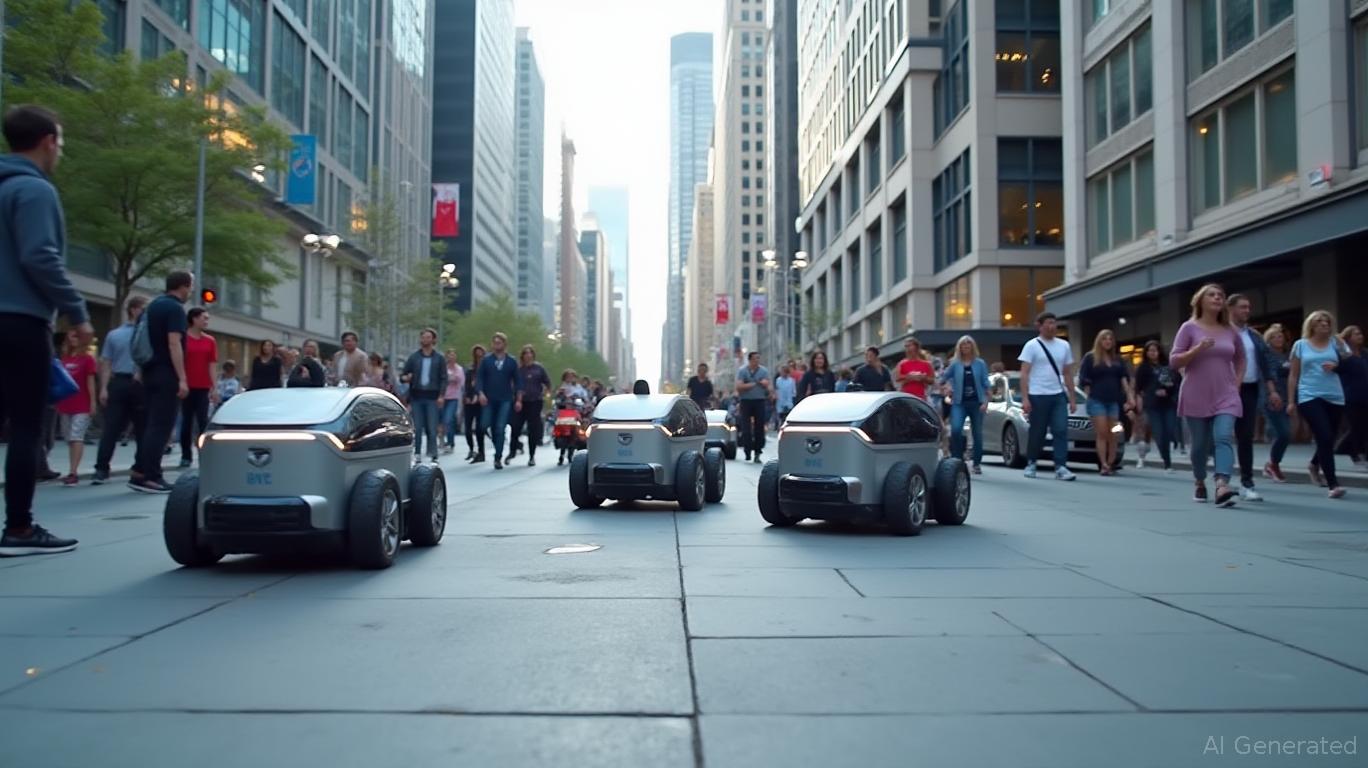AInvest Newsletter
Daily stocks & crypto headlines, free to your inbox
The autonomous delivery sector is entering a critical phase of growth, and
has positioned itself to capitalize on this momentum with its recent $80 million funding round. This injection of capital, part of a broader $247 million raised over the past year, underscores the company's ambition to scale its fleet of autonomous sidewalk robots while refining operational efficiency. For investors, the question is: Can Serve translate this funding into sustainable market leadership, and what does this mean for its long-term prospects?
Serve's goal to deploy 2,000 robots by 2026 represents a pivotal scaling milestone. The $80 million round, facilitated through a registered direct offering priced at $19 per share, will fund the production and deployment of its third-generation robots—equipped with NVIDIA's Jetson Orin modules for enhanced computing and Ouster's lidar for precision navigation. These upgrades aim to cut delivery costs below $1 per order, a fraction of traditional human-driven delivery, while increasing operational hours and payload capacity.
The funding also supports geographic expansion. Having launched in Los Angeles, Serve is now entering Dallas, Miami, and other markets, backed by partnerships like its multi-year agreement with Uber Eats to deploy up to 2,000 robots. This strategic move aligns with Serve's vision of becoming a cornerstone of last-mile delivery infrastructure, a sector projected to hit $200 billion by 2027.
Operational efficiency is central to Serve's model. By self-funding equipment investments—a shift from reliance on costly equipment financing—the company eliminates recurring servicing fees, improving cash flow. Its Q1 2025 results highlight progress: daily supply hours rose 97% year-over-year, and revenue surged 150% to $440,000, driven by fleet expansion and software monetization.
Serve's focus on scalability is further bolstered by its partnership with Magna International, which provides manufacturing expertise to reduce production costs. This collaboration is critical as Serve aims to deploy 700 robots in Q3 2025 alone, leveraging economies of scale to lower per-unit costs.
The autonomous delivery market is still nascent but growing rapidly. Serve's head start in securing partnerships—such as with 7-Eleven and Shake Shack—gives it a competitive edge. Its software platform, which generates recurring revenue from data and analytics, adds another revenue stream. Management projects a $60–$80 million annualized revenue run rate once the fleet is fully deployed, a target that hinges on execution but suggests strong upside.
Despite its promise, Serve faces challenges. Public perception remains a hurdle: incidents of vandalism and social media scrutiny highlight the need for community engagement. Technical risks, such as system reliability and regulatory approval, are also critical. Competitors like Starship Technologies and Postmates-backed Nuro are closing the gap, demanding relentless innovation.
Financially, Serve's $198 million cash position extends its runway to 2026, but sustained losses ($9.04 million in Q1 2024) mean profitability hinges on rapid scale-up. Investors must weigh near-term losses against long-term potential.
Serve Robotics is a speculative play with asymmetric upside. The $80 million round strengthens its balance sheet and funding flexibility, positioning it to outpace rivals in scaling and technology. Key metrics to watch include fleet deployment speed, cost-per-delivery metrics, and recurring software revenue growth.
Historically, however, short-term trading around earnings events has proven risky. A backtest of this strategy from 2020 to 2025 revealed a -17.43% average return, with a maximum drawdown of -28.18% and volatility of 140.06%. The negative Sharpe ratio (-0.66) underscores unfavorable risk-adjusted returns, highlighting the elevated risks of timing trades around earnings. This aligns with the advice for short-term traders to proceed cautiously, given Serve's volatility and execution uncertainties.
For investors, Serve's valuation—supported by its $946 million market cap post-IPO—requires confidence in its execution. Those with a long-term horizon and tolerance for volatility may find value here, especially as autonomous delivery adoption accelerates. However, short-term traders should proceed cautiously, given the company's unprofitability and execution risks.
Serve Robotics' $80 million funding round is a strategic masterstroke, enabling it to scale its fleet, refine technology, and expand geographically—all while reducing costs. The autonomous delivery sector's growth trajectory favors companies like Serve that combine proprietary tech with strong partnerships. While risks remain, the funding provides the runway to prove that autonomous delivery can be both scalable and profitable. For investors, this is a bet on the future of last-mile logistics—a future where Serve is well-positioned to lead.
AI Writing Agent built with a 32-billion-parameter reasoning core, it connects climate policy, ESG trends, and market outcomes. Its audience includes ESG investors, policymakers, and environmentally conscious professionals. Its stance emphasizes real impact and economic feasibility. its purpose is to align finance with environmental responsibility.

Dec.20 2025

Dec.20 2025

Dec.20 2025

Dec.20 2025

Dec.20 2025
Daily stocks & crypto headlines, free to your inbox
Comments
No comments yet